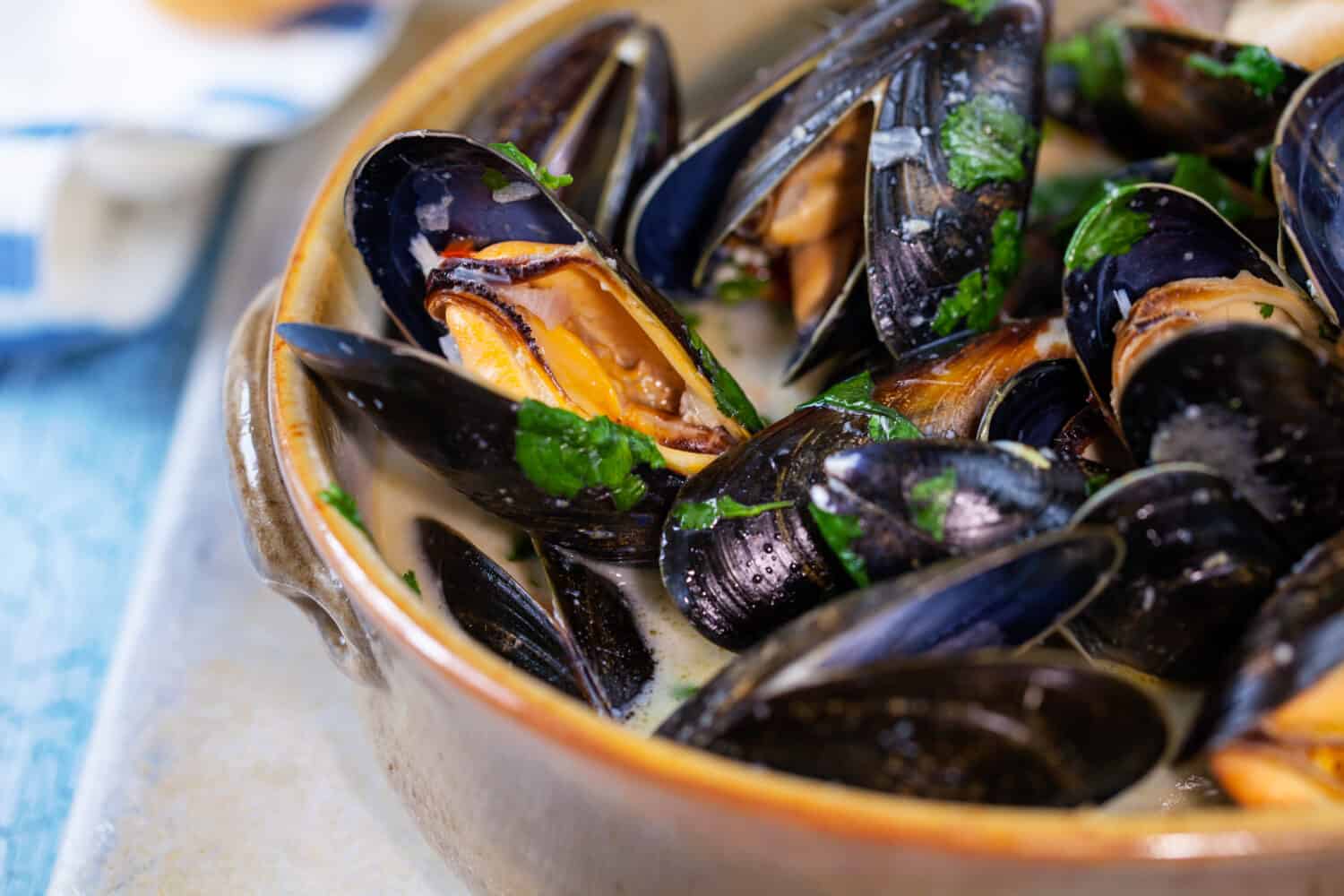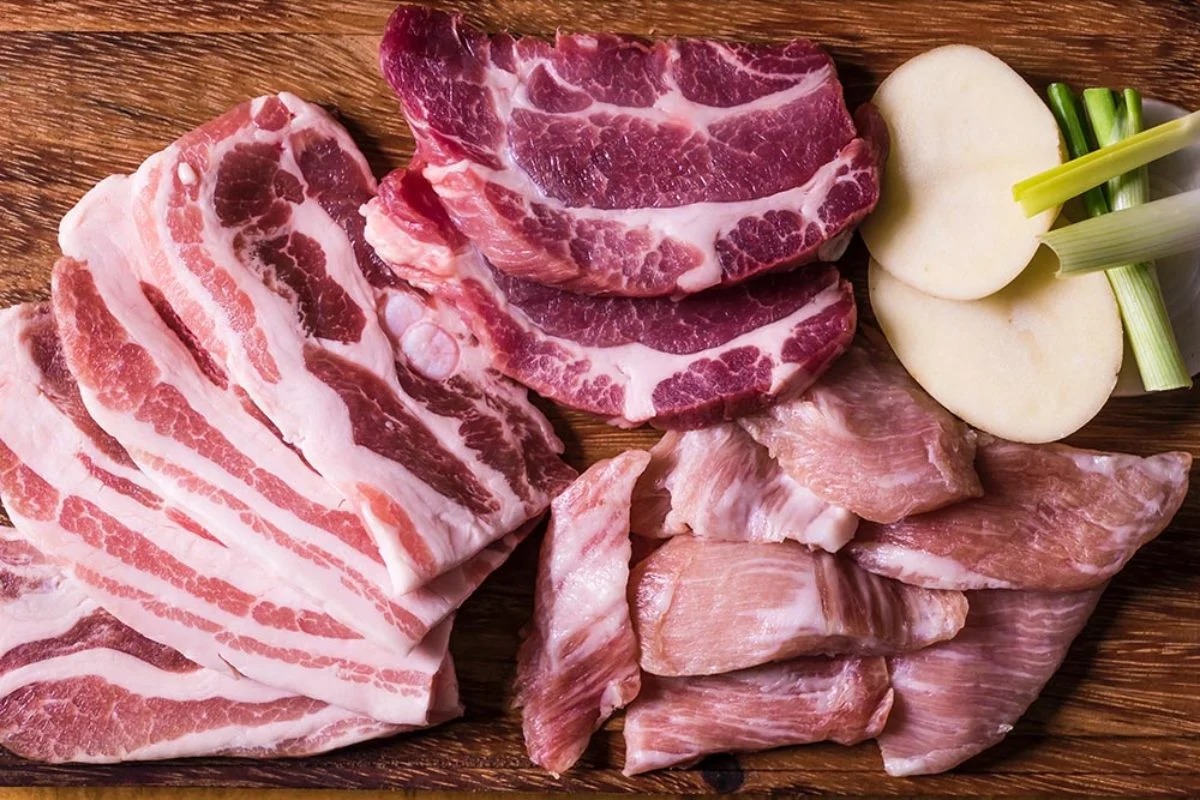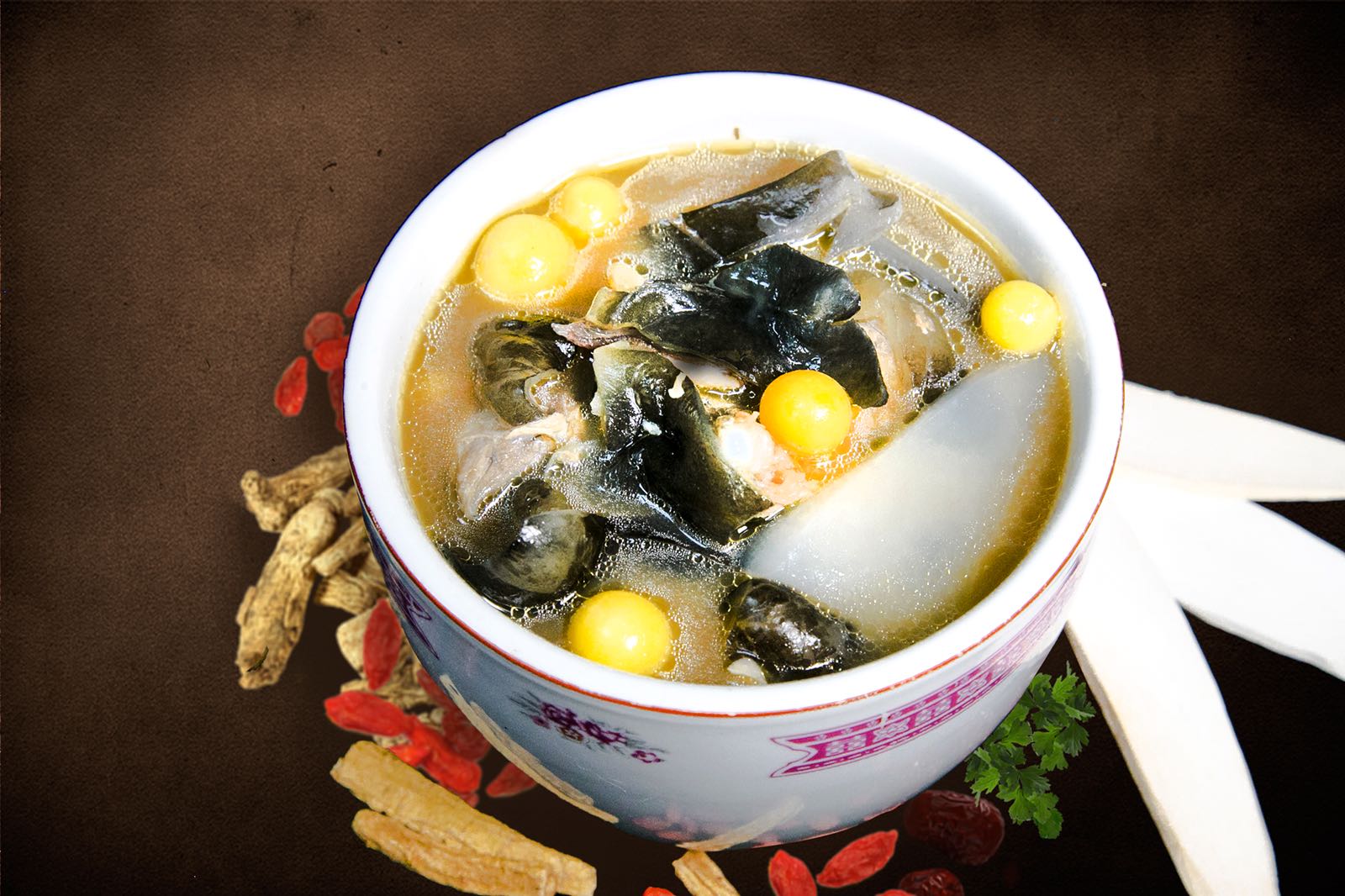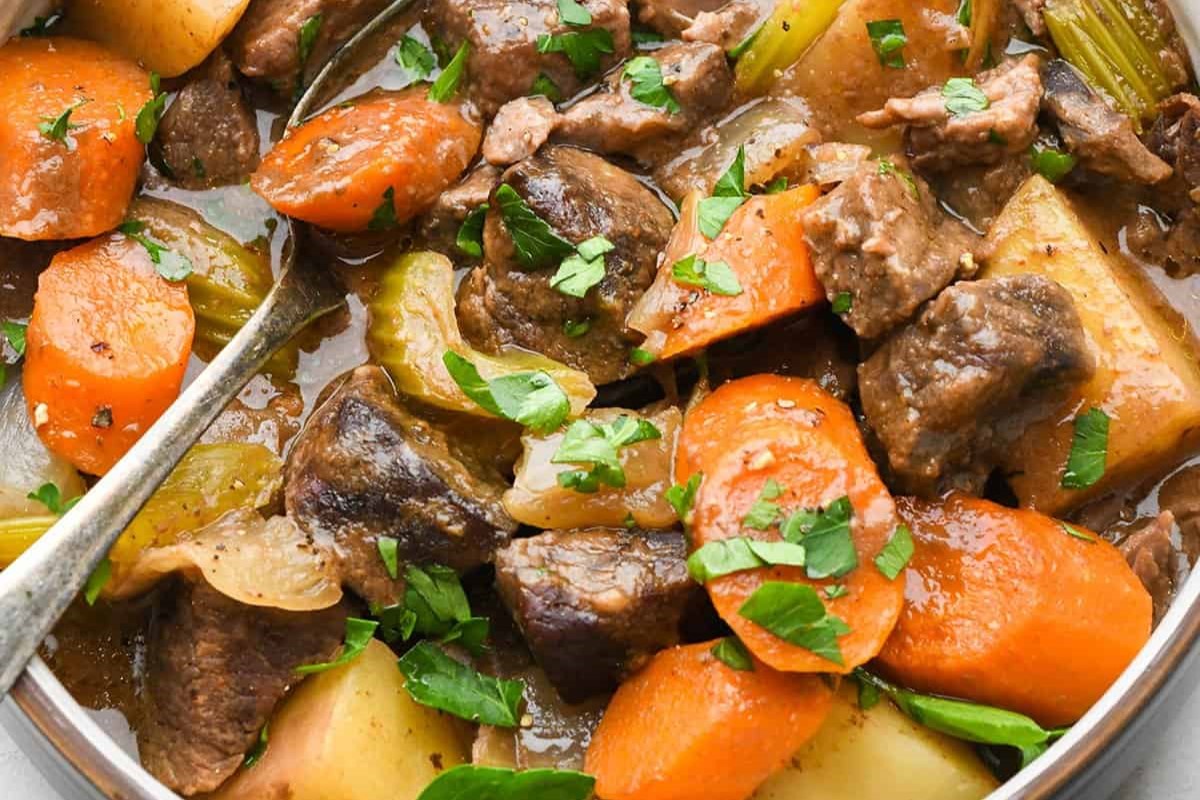Home>Food and Cooking>The Surprising Truth: Veal Vs Beef – Which Is More Delicious?
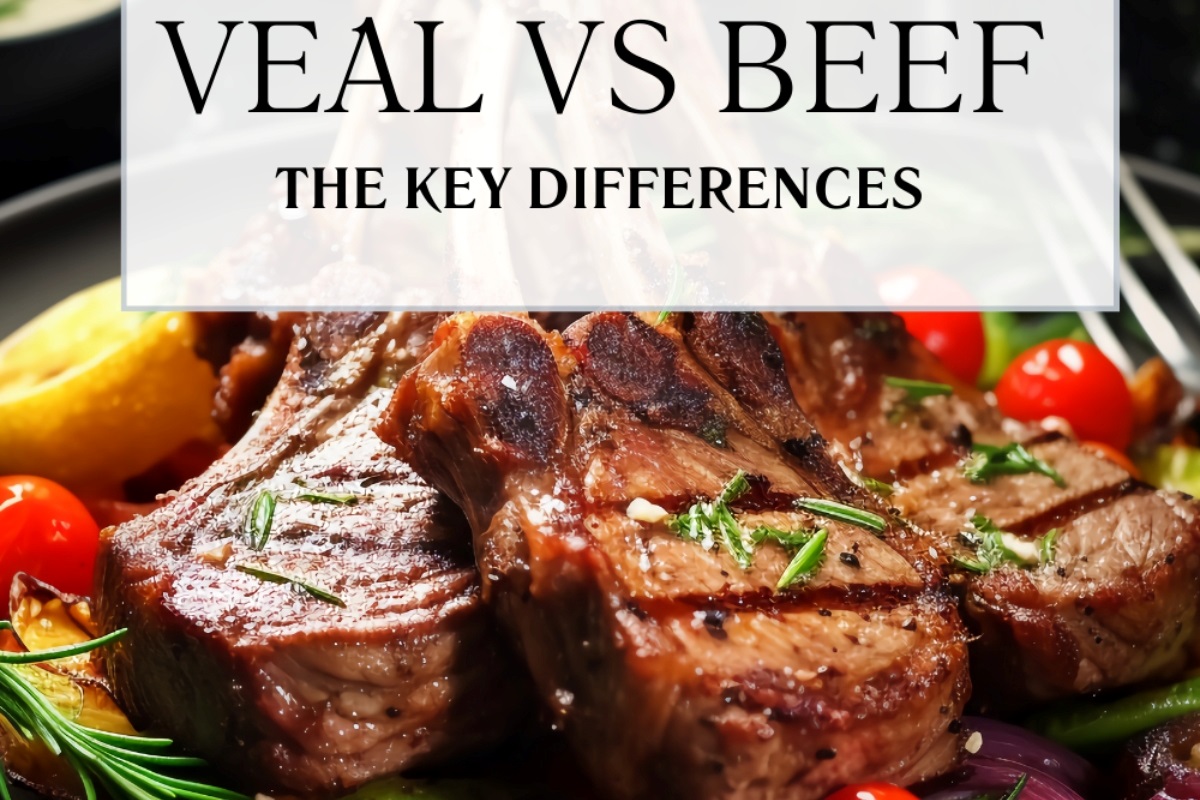

Food and Cooking
The Surprising Truth: Veal Vs Beef – Which Is More Delicious?
Published: January 30, 2024
Discover the flavorful debate between veal and beef in this food and cooking comparison. Uncover the surprising truth about which is more delicious.
(Many of the links in this article redirect to a specific reviewed product. Your purchase of these products through affiliate links helps to generate commission for Noodls.com, at no extra cost. Learn more)
Table of Contents
Introduction
When it comes to selecting meats for cooking, the choice between veal and beef can be a perplexing one for many culinary enthusiasts. Both meats offer distinctive flavors and textures, and each has its own set of nutritional benefits and ethical considerations. Exploring the differences between veal and beef can shed light on the culinary, nutritional, and ethical aspects of these meats, enabling consumers to make informed choices based on their preferences and values.
In this comprehensive guide, we will delve into the surprising truth behind the veal vs. beef debate, exploring the unique characteristics of each meat and providing a thorough comparison of their nutritional profiles and flavors. Additionally, we will examine the ethical and environmental considerations associated with veal and beef production, offering valuable insights into the broader implications of choosing one meat over the other.
By the end of this exploration, readers will gain a deeper understanding of the nuances between veal and beef, empowering them to make conscious decisions that align with their dietary preferences, ethical beliefs, and environmental concerns. So, let's embark on this enlightening journey to unravel the captivating world of veal and beef, and discover which of these delectable meats reigns supreme in the realm of culinary delight.
What is Veal?
Veal is a type of meat that comes from young cattle, particularly calves. The age at which a calf is considered veal varies by country, but it is generally slaughtered when it is around 16 to 18 weeks old. This early age at slaughter contributes to the tender and delicate texture that veal is known for. The meat boasts a pale pink color and a subtle, mild flavor, making it a versatile ingredient in various culinary preparations.
The process of producing veal involves specific feeding and care practices to ensure the desired tenderness and flavor. Calves raised for veal are typically fed a milk-based diet, which contributes to the meat's characteristic pale color and delicate taste. Additionally, veal calves are often housed in spacious, well-ventilated environments that prioritize their comfort and well-being.
In terms of cuts, veal offers a diverse range of options, including tenderloin, rib chops, shoulder, and shank. Each cut presents unique culinary possibilities, with the tenderloin being ideal for quick cooking methods such as grilling or pan-searing, while the shank is well-suited for slow braising to achieve rich, succulent flavors.
Veal's delicate flavor and tender texture make it a popular choice for elegant dishes, where its subtle taste can shine. From classic veal piccata to creamy veal scaloppini, this meat lends itself to a wide array of culinary creations, delighting palates with its refined and nuanced profile.
Understanding the unique characteristics of veal, from its early slaughter age to its tender texture and mild flavor, provides valuable insight into the culinary potential of this exceptional meat. As we continue our exploration, we will uncover the distinct attributes of beef and delve into a comprehensive comparison of these two delectable meats.
What is Beef?
Beef is a staple in cuisines around the world, cherished for its robust flavor, versatility, and rich nutritional profile. Derived from mature cattle, typically cows or steers, beef offers a diverse array of cuts, each with its own texture and flavor characteristics. The age at which cattle are processed for beef varies, with the meat generally sourced from animals between 18 months to 3 years old. This extended period of growth contributes to the development of beef's distinct marbling, which enhances its tenderness and depth of flavor.
One of the defining features of beef is its rich, savory taste, which can vary depending on the specific cut and the animal's diet and breed. From the buttery tenderness of a filet mignon to the robust, beefy flavor of a ribeye steak, beef presents a spectrum of taste experiences that cater to a wide range of culinary preferences. Additionally, the versatility of beef extends beyond steaks, encompassing ground beef for hearty burgers, tender roasts for celebratory meals, and succulent ribs for indulgent barbecues.
In terms of nutritional value, beef is a powerhouse of essential nutrients, including high-quality protein, iron, zinc, and B vitamins such as B12 and niacin. These nutrients play vital roles in supporting muscle health, cognitive function, and overall well-being, making beef a valuable component of a balanced diet.
The culinary potential of beef is further amplified by the diverse cooking methods it accommodates. Whether seared to perfection on a grill, slow-cooked to tender perfection in a stew, or thinly sliced for a savory stir-fry, beef adapts to a myriad of culinary techniques, offering endless possibilities for creating delectable dishes.
As we delve into the comparison between veal and beef, it becomes evident that while veal embodies delicacy and tenderness, beef exudes robustness and depth of flavor. Each meat brings its own unique characteristics to the table, catering to different culinary preferences and cooking styles. Understanding the distinct attributes of beef sets the stage for a comprehensive exploration of its nutritional benefits, flavor profile, and culinary versatility, providing valuable insights for consumers seeking to make informed choices in their culinary endeavors.
Nutritional Comparison
When it comes to comparing the nutritional profiles of veal and beef, several key factors come into play, influencing the dietary value and health implications of these meats. Both veal and beef offer essential nutrients that contribute to overall well-being, but their compositions differ in significant ways.
Protein Content:
Beef is renowned for its high protein content, providing a substantial amount of this essential macronutrient. A 3-ounce serving of beef typically delivers around 25 grams of protein, making it an excellent choice for individuals seeking to meet their daily protein requirements. Veal also offers a notable protein content, albeit slightly lower than beef. A similar serving size of veal provides approximately 21 grams of protein, still contributing significantly to the overall protein intake.
Fat Composition:
One of the notable distinctions between veal and beef lies in their fat compositions. Beef tends to have a higher fat content, particularly marbling fat within the muscle tissue, which contributes to its rich flavor and tenderness. On the other hand, veal generally contains less intramuscular fat, resulting in a leaner overall profile. This difference in fat content can be a crucial consideration for individuals seeking leaner meat options within their dietary choices.
Nutrient Density:
In terms of essential nutrients, both veal and beef offer valuable vitamins and minerals that support various bodily functions. Beef is notably rich in iron, a vital mineral for oxygen transport and energy production. Additionally, it provides significant amounts of zinc, which plays a crucial role in immune function and wound healing. Veal also contains essential nutrients, including iron and zinc, albeit in slightly lower concentrations compared to beef. Both meats contribute to the overall nutrient density of a balanced diet, offering valuable sources of essential minerals.
Overall Comparison:
While beef and veal differ in certain nutritional aspects, they both hold a place in a well-rounded diet. Beef's higher protein content and rich array of nutrients make it a valuable component for individuals with increased protein needs, such as athletes and those engaged in rigorous physical activities. On the other hand, veal's leaner profile can appeal to individuals seeking lower-fat meat options without compromising on essential nutrients.
Understanding the nuanced nutritional differences between veal and beef empowers consumers to make informed decisions based on their dietary requirements and health goals. Whether prioritizing higher protein intake or opting for leaner meat choices, the nutritional comparison between veal and beef provides valuable insights for individuals seeking to optimize their dietary habits and overall well-being.
Flavor Comparison
The flavor profiles of veal and beef are as distinct as they are delightful, offering culinary experiences that cater to a diverse range of palates and cooking styles. Understanding the nuanced differences in flavor is essential for discerning consumers and culinary enthusiasts seeking to elevate their dining experiences with the perfect meat selection.
Veal's Subtle Elegance:
Veal is celebrated for its delicate and subtle flavor, characterized by a mild, yet distinct taste that sets it apart from other meats. The early age at which veal calves are processed contributes to the meat's tender texture and pale pink color, reflecting the gentle upbringing and specialized diet they receive. This combination of factors results in a flavor profile that is nuanced, refined, and remarkably tender, making veal an ideal canvas for delicate culinary preparations.
From classic Italian dishes like veal piccata to the indulgent French specialty, veal scaloppini, the subtle flavor of veal shines through, allowing the delicate nuances of accompanying ingredients to take center stage. The mildness of veal's flavor makes it a versatile choice for chefs and home cooks alike, providing a canvas for intricate flavor pairings and culinary creativity.
Beef's Robust Depth:
In stark contrast to veal's delicacy, beef boasts a robust and deeply flavorful profile that has made it a cornerstone of global culinary traditions. The extended growth period of cattle results in the development of rich marbling within the muscle tissue, infusing the meat with a depth of flavor and succulence that is unparalleled. Whether it's the buttery tenderness of a filet mignon, the hearty richness of a ribeye steak, or the savory complexity of a beef brisket, beef offers a spectrum of taste experiences that cater to diverse culinary preferences.
The robust flavor of beef lends itself to a myriad of cooking methods, from grilling and roasting to slow braising, allowing for the creation of hearty, comforting dishes that celebrate the meat's innate richness and depth of flavor. Additionally, the marbling fat within beef not only contributes to its flavor complexity but also enhances its tenderness, resulting in a satisfying and indulgent dining experience.
Culinary Implications:
The distinct flavor profiles of veal and beef have profound implications for culinary creations, influencing the choice of ingredients, cooking techniques, and flavor pairings. Veal's delicate taste harmonizes beautifully with light, aromatic sauces and nuanced seasonings, allowing for the creation of elegantly balanced dishes that showcase the meat's tender texture and subtle flavor.
On the other hand, beef's robust flavor pairs exquisitely with bold, savory elements, robust spices, and rich sauces, giving rise to hearty, comforting dishes that embody the essence of indulgence and satisfaction. Whether it's the refined elegance of veal or the hearty richness of beef, each meat offers a unique flavor journey, inviting culinary exploration and creativity.
Final Thoughts:
In the grand tapestry of culinary delights, the flavor comparison between veal and beef unveils a captivating dichotomy, where delicacy meets robustness and subtlety intertwines with depth. Understanding the nuanced flavor profiles of these meats empowers consumers and chefs to embark on culinary adventures that celebrate the unique attributes of veal and beef, enriching dining experiences with the perfect complement of flavor and texture.
Read more: The Mind-Blowing Truth: Fast Pitch Softball Vs Baseball – Which Is More Challenging To Hit?
Ethical Considerations
When evaluating the choice between veal and beef from an ethical standpoint, various considerations come into play, shedding light on the broader implications of meat consumption and animal welfare. The ethical dimensions of selecting veal or beef extend beyond personal dietary preferences, encompassing the treatment of animals, sustainable farming practices, and conscientious decision-making in the realm of food production.
Veal: Compassionate Rearing and Animal Welfare
Veal production has been a subject of ethical scrutiny due to traditional practices that have raised concerns about animal welfare. In the past, veal calves were often subjected to confinement in restrictive crates, limiting their movement and natural behaviors. However, evolving standards in veal farming have led to significant improvements in animal welfare practices. Many veal producers have transitioned to group housing systems that prioritize the well-being and comfort of calves, allowing them to socialize and move freely within spacious enclosures. Additionally, specialized diets tailored to meet the nutritional needs of veal calves contribute to their overall health and vitality.
Beef: Sustainable Ranching and Environmental Impact
The ethical considerations surrounding beef production extend to environmental sustainability and land stewardship. Sustainable ranching practices emphasize responsible land management, conservation of natural resources, and the welfare of grazing cattle. By implementing rotational grazing techniques and land restoration initiatives, beef producers contribute to the preservation of ecosystems and the promotion of biodiversity. Furthermore, sustainable beef production prioritizes animal welfare, ensuring that cattle are raised in environments that allow for natural behaviors and optimal well-being.
Consumer Awareness and Informed Choices
Ethical considerations in the veal vs. beef debate also extend to consumer awareness and informed decision-making. As consumers become increasingly conscientious about the origins of their food, ethical certifications, such as organic and humane labels, play a crucial role in guiding purchasing decisions. These certifications provide assurance that veal and beef have been produced in accordance with stringent animal welfare standards, sustainable farming practices, and ethical treatment of livestock.
The Path to Informed Choices
Navigating the ethical landscape of veal and beef consumption involves a multifaceted approach that encompasses animal welfare, sustainable farming practices, and consumer awareness. By supporting producers committed to ethical rearing practices and sustainable agriculture, consumers can contribute to a food system that prioritizes the well-being of animals and the preservation of natural resources. Additionally, engaging in dialogue and education about ethical considerations in meat production fosters a culture of conscious consumption, empowering individuals to make informed choices aligned with their ethical values and environmental stewardship.
In the realm of ethical considerations, the veal vs. beef discourse underscores the importance of ethical rearing practices, sustainable farming initiatives, and consumer awareness, collectively shaping a landscape where conscientious choices intersect with compassion for animals and the environment.
Environmental Impact
The environmental impact of meat production, including veal and beef, encompasses a spectrum of considerations, ranging from resource utilization and greenhouse gas emissions to land use and biodiversity conservation. Understanding the ecological footprint of these meats is crucial for fostering sustainable agricultural practices and mitigating the environmental effects associated with livestock farming.
Resource Utilization and Greenhouse Gas Emissions
Beef production, in particular, has been linked to significant resource utilization and greenhouse gas emissions. Cattle raised for beef require substantial amounts of feed, water, and land, contributing to the strain on natural resources. Additionally, the enteric fermentation process in cattle, a natural digestive mechanism, results in the release of methane, a potent greenhouse gas that contributes to climate change. These factors underscore the environmental implications of beef production, prompting calls for sustainable farming practices and resource-efficient approaches to mitigate its ecological impact.
Veal production, while also utilizing resources, presents a nuanced environmental profile. The early processing age of veal calves results in a shorter lifecycle compared to beef cattle, potentially reducing the overall resource requirements and environmental footprint. Furthermore, advancements in veal farming practices, such as optimized feed formulations and waste management strategies, contribute to more sustainable resource utilization and reduced environmental impact.
Land Use and Biodiversity Conservation
The allocation of land for livestock farming, including grazing and feed production, has implications for biodiversity conservation and ecosystem integrity. Large-scale beef production often necessitates expansive grazing areas and feed crop cultivation, leading to deforestation, habitat loss, and soil degradation. Sustainable land management practices, such as rotational grazing and agroforestry, play a vital role in mitigating the environmental impact of beef production, preserving natural habitats, and fostering biodiversity.
Veal production, characterized by its focused approach to calf rearing, presents opportunities for efficient land use and reduced environmental pressure. By optimizing land utilization for veal farming and implementing sustainable land management practices, producers can contribute to the conservation of natural ecosystems and the promotion of ecological balance.
Path to Sustainable Meat Consumption
The environmental impact of veal and beef production underscores the importance of sustainable meat consumption and conscientious agricultural practices. By supporting producers committed to sustainable farming, regenerative land management, and resource-efficient livestock rearing, consumers can contribute to a food system that prioritizes environmental stewardship and biodiversity conservation. Additionally, embracing plant-forward dietary choices and incorporating sustainable meat alternatives can further mitigate the environmental impact of meat consumption, fostering a balanced approach to culinary enjoyment and ecological responsibility.
In the pursuit of sustainable agriculture and mindful consumption, the environmental impact of veal and beef production serves as a catalyst for informed decision-making and collective efforts to promote a harmonious relationship between food production and the natural environment.
Conclusion
In the realm of culinary exploration and ethical consumption, the veal vs. beef debate offers a multifaceted journey that intertwines flavor, nutrition, ethics, and environmental impact. Each meat, veal and beef, presents a tapestry of unique attributes that cater to diverse culinary preferences and dietary considerations. Veal, with its tender texture and delicate flavor, embodies elegance and subtlety, providing a canvas for refined culinary creations. In contrast, beef exudes robustness and richness, captivating palates with its depth of flavor and culinary versatility.
The nutritional comparison between veal and beef unveils a spectrum of essential nutrients, protein content, and fat composition, offering valuable insights for individuals seeking to optimize their dietary choices. Whether prioritizing higher protein intake or leaner meat options, the nutritional profiles of veal and beef provide a foundation for informed decision-making in the pursuit of balanced and healthful eating.
Exploring the nuanced flavor profiles of veal and beef reveals a captivating dichotomy, where delicacy meets robustness and subtlety intertwines with depth. Each meat offers a unique flavor journey, inviting culinary exploration and creativity, enriching dining experiences with the perfect complement of flavor and texture.
Ethical considerations in the veal vs. beef discourse underscore the importance of conscientious decision-making, animal welfare, and sustainable farming practices. By supporting producers committed to ethical rearing practices and sustainable agriculture, consumers contribute to a food system that prioritizes the well-being of animals and the preservation of natural resources.
The environmental impact of veal and beef production serves as a catalyst for informed decision-making and collective efforts to promote a harmonious relationship between food production and the natural environment. Embracing sustainable meat consumption and conscientious agricultural practices fosters a balanced approach to culinary enjoyment and ecological responsibility, nurturing a food system that thrives in harmony with the planet.
In conclusion, the veal vs. beef debate transcends mere culinary preferences, offering a holistic exploration of nutrition, flavor, ethics, and sustainability. By delving into the captivating world of veal and beef, consumers and culinary enthusiasts gain valuable insights that empower them to make conscious choices aligned with their dietary preferences, ethical beliefs, and environmental values.




